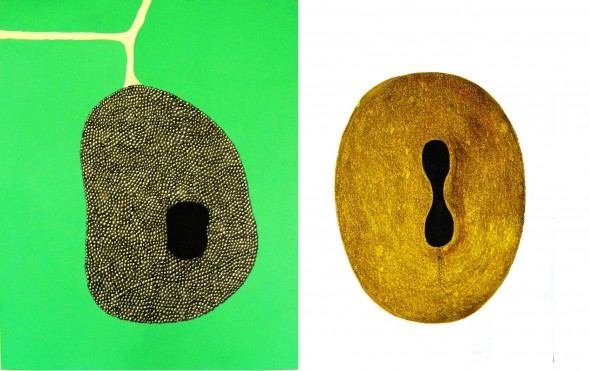Search results for "2011/04/2010/05/song-without-words/page/googleartproject.com/collection/ateneum-art-museum"
Art online
23 May 2013 | In the news

Helene Schjerfbeck’s The convalescent (1888) on the cover of the guidebook of the Ateneum Art Museum
Attention lovers of Finnish art: the Ateneum Art Museum in Helsinki has joined the international Google Art Project (begun in 2011), with 260 participating art institutes and more than 40,000 works of art as high-resolution images.
The website also includes information on the paintings. Among the 55 images from Ateneum on show now are many of the great works of the golden period of Finnish art (1880–1910), including Hugo Simberg’s darkly cute The Garden of Death, Albert Edelfelt’s heartbreakingly beautiful Conveying a Child’s Coffin, Akseli Gallen-Kallela’s classic portrayal of grief, Lemminkäinen’s mother, and – a personal favourite here at the Books from Finland office – Magnus von Wright’s evocative Annankatu Street on a Cold Winter’s Morning.
The Ateneum has few foreign works of art; in the Google Art collection now there are one Rodin, a Modigliani, a van Gogh and two Gauguins.
Self-made man
1 April 2009 | Extracts, Non-fiction
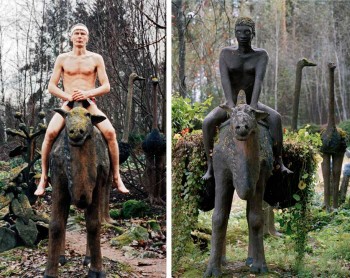
On camelback: in the exotic part of Veijo Rönkkönen’s concrete cosmos there are animals and palm trees, side by side with the living plants of the northerly latitudes. - Photo, left: Veijo Rönkkönen; right: Veli Granö.
Extracts and photographs from Veijo Rönkkösen todellinen elämä / The real life of Veijo Rönkkönen (Maahenki, 2007. Translation: Kirsti Nurmela-Knox)
Veijo Rönkkönen (born 1944) has lived all his life on an isolated, small farm in eastern Finland, Parikkala, less than a kilometre from the Russian border, where he has quietly built a garden inhabited by nearly five hundred human figures made of concrete. Entrance is free.
Cautionary tales
30 September 2002 | Fiction, Prose
Short stories from Förklädnader. Sagor, parabler (‘Disguises. Stories, allegories’, Schildts, 2001; Valepukuja. Satuja, vertauksia, WSOY, 2002)
Assistance
All over Hellas, even in the barbarian lands, the lyre-players competed with one another. Odes, paeans, dithyrambs echoed endlessly. Phoebus Apollo himself generously oversaw these productions.
A certain promising singer, Deinarchos by name, who hoped to participate in the upcoming Pythian contest, sat in his study-cave in the mountains of Thessaly waiting for inspiration. He prayed repeatedly to Phoebus for help, but did not detect any response. More…
Panem et circenses?
2 February 2012 | This 'n' that
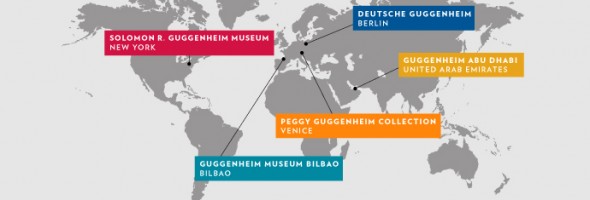
The Guggenheim Foundation's global network of museums
What does Helsinki need? Bread and circuses, yes, but at what cost the latter?
In January – after a study that cost the Finns a couple of million euros – the Salomon R. Guggenheim Foundation (est. 1937) indicated that it was favourably inclined toward the construction of a new art museum, bearing its name, in Helsinki. The leaders of Helsinki city council are aiming to make a positive decision as soon as possible.
The cost of the building, whose site adjoins the Presidential Palace in central Helsinki, is estimated at 130–140 million euros, with design costs of about 11 million euros. Unlike in the case of Berlin, no existing building is considered suitable; instead, an architectural dream must be realised, with plenty of wow-factor.
Its mere maintenance costs will be around 14.5 million euros a year. It has been estimated that the Helsinki Guggenheim’s income could be 7.7 million a year. In addition, a 20-year Guggenheim licence costs 24.6 million euros.
The project has provoked widely differing reactions. Proponents of the project believe that the Guggenheim brand would bring thousands of new visitors to Helsinki and that half a million people would visit it each year. Opponents doubt this, speak of a ‘Guggenburger’ franchising concept and of the fact that not even the existing art museums of Helsinki are particularly crowded.
The odd thing is, however, that the basic demographic differences between Helsinki and, say, Bilbao – where the Guggenheim museum has been a big success – are constantly ignored in the discussions: the population of Spain is almost 50 million and another 50 million visitors go there every year, while the corresponding figures for this most northerly part of Europe are five million inhabitants and visitors.
In Bilbao, moreover, there was no museum of contemporary art before the advent of the Guggenheim; Helsinki, on the other hand, opened Kiasma, a new museum of contemporary art (165,000 visitors in 2010) in 1998 and the neighbouring city of Espoo its Emma museum of modern art (82,000 visitors in 2010) in 2006.
Economic prospects on any level now offer little hope. The Finnish government, in the shape of the ministry of culture, has just cut grants to state-aided museums by three million euros – the Museum of Cultures in Helsinki, for example, is closing its doors, and some 40 of the museum staff elsewhere will be sacked. The government is not promising any money to the Guggenheim.
How, then, to fund an annual deficit of 7 million euros? Finland does not have a great supply of art-minded millionaire sponsors, and no one has so far made any concrete offers on how to fund this project.
The Guggenheim Foundation itself is not taking any financial risks with this project. Neither has it announced in any detail what sort of art will feature in the museum’s temporary exhibitions.
People who live in the city are more preoccupied with, for example, the shortcomings of the health services: there are waiting lists for everything, often of many weeks, and the old university children’s hospital has outgrown its present space. There are cuts and shrinkages yet to come in the spending structure of the country as a whole and of Helsinki – civil servants themselves estimate that the city’s budget is not sufficient to cover even the upkeep of basic services.
To judge by the public debate, the deep ranks of Helsinki taxpayers do not want a new monument, one for which it will be necessary to pay – in addition to maintenance – more than a million euros a year to an American brand for the mere use of its name, for more than 20 years.
Do the people of Helsinki wish to begin to pay additional taxes for the revival, yet again, of the age-old dream of guaranteeing Finland ‘a place on the world map’, in a situation where economic difficulties are a matter of everyday life for increasing numbers of them? (We believe, incidentally, that Finland already has an appropriate place on the world map.) Will their opinion be asked, or heard?
Kristiina Kalleinen: Kansallisen tieteen ja taiteen puolesta. Kalevalaseura 1911–2011 [On behalf of national science and art. The Kalevala Society 1911–2011]
10 June 2011 | Mini reviews, Reviews
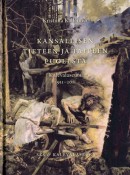 Kansallisen tieteen ja taiteen puolesta. Kalevalaseura 1911–2011
Kansallisen tieteen ja taiteen puolesta. Kalevalaseura 1911–2011
[On behalf of national science and art. The Kalevala Society 1911–2011]
Helsinki: Finnish Literature Society, 2011. 314 p., ill.
ISBN 978-952-223-256-5
€ 37, hardback
In 1911, the Finnish national epic Kalevala (1835, 1849), compiled by Elias Lönnrot and based on Finnish folk poetry, inspired the artist Akseli Gallen-Kallela, the sculptor Alpo Sailo, Professor E.N. Setälä and the folklorist Väinö Salminen to found the Kalevala Society (established in 1919), aimed at uniting Finland’s national science and art into a harmonious whole. As Russia tightened its grip on the Grand Duchy during the latter part of the nineteenth century, it awakened a desire to demonstrate the vitality of the Finnish language and national spirit. This book maps out the effect of the changing social and political situation on the Society’s activities. In the 1920s and 1930s the Kalevala Society remained largely outside the political and linguistic conflicts of the time. This was a period of extreme Finnish nationalism, but in the Society there was little inclination towards ‘Greater Finland’ thinking or anti-Russian or anti-Swedish sentiment. During Finland’s wars with the Soviet Union some members nonetheless had hopes of a Greater Finland, as many of the regions where the Kalevala poems originated lay on the Soviet side of the border. In recent years the Society has participated with other organisations in projects devoted to the regeneration of Russian Karelian villages and the protection of the last traditional Finnish landscapes.
Translated by David McDuff
A rare bird from Fancyland
20 August 2013 | Reviews
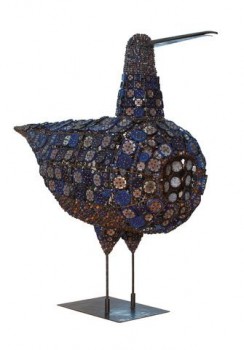
Bead-covered curlew, 1960. Height ca. 115 cm, Collection Kakkonen. Photo: Niclas Warius
Harri Kalha:
Birger Kaipiainen
Helsinki: Suomalaisen Kirjallisuuden Seura (The Finnish Literature Society), 2013. 249 p., ill.
(Summaries in Swedish and English)
ISBN 978-952-222-457-6
€46, hardback
Ceramics confectioner. Degenerate aristocrat. Ornamental criminal. These epithets can be found in Birger Kaipiainen, a new, full-length study of the ceramic artist by art historian Harri Kalha.
Throughout his artistic career Birger Kaipiainen (1915–1988) worked with forms, subjects and methods that were unfamiliar in the field of traditional ceramics, at least in mid-20th-century Finland, and made use of fantasy and ornament. As a ‘porcelain painter’ he showed little interest in the technical challenges of clay – although in his ceramic creations Kaipiainen explored three-dimensional form, montage, colour, texture and the tactile dimensions of the medium. More…
Art for art’s sake
8 June 2012 | Letter from the Editors

Art, entertainment for the elite? ‘The two pantaloons’ by Jacques Callot (1616). Etching, British Museum. Picture: Wikimedia
It is the necessity, or the obsession, of the present age to measure everything in monetary terms: to know as exactly as possible how much money something is capable of making for the owner of its ‘rights’.
This also applies to various fields of art: for example, a play is expected to make profit for its producers – today also in the case of ‘uncommercial’ institutions such as National Theatres. Seats must be sold; bringing in busloads of people is a must.
But the purpose of creating art is not to increase the GDP. Art is not useful, as theatre director and playwright Esa Leskinen argues in a recent essay (in Finnish only): ‘Art doesn’t aspire to anything. Art isn’t something that is consumed in order to gather the energy to go on working. The purpose of art is not to burnish the image of Finland or make people feel good. Art is radically other than the field of sense and utility in which our everyday world is located.
‘There is no sense in art. Art is no use.’
We agree. We also think that’s how it should be. More…
Pop song lyrics
A ‘short special’: a previously unpublished text (written in the 1960s) from Luonnonkierto (‘Nature’s circle’, Siltala, 2012). Introduction by Jarmo Papinniemi
The pop song is a wide, mysterious world. It is like an ocean. Like a snow-covered desert. Like a rose garden. Like a perfume factory. The pop song is as mysterious as spring. The pop song is as whimsical as the restroom of the city hotel in Samarkand. The pop song is as coarse as your father’s eldest brother. Pop songs snag everyone, especially the young and the old. The best pop songs are foreign, because the words make no sense. Pop stars rise into the sky. Lovely young women step into the arena smelling of perfume and sing about love or tell playful stories about animals or nursery rooms. And then on the other end of life the stars go out and start to look for a place to be buried. But before dying they drone on in their gruff voices about the temptations of the big city, and love, which in a certain sense tortured and wore out those concerned…
Up here in Finland, we write and set pop songs to music as well. But I have to say that they aren’t any good. We also translate and water down a lot of foreign hits as well. Well, of course they’re all popular and people hum them in parishes in the city and in the country, but from a critical perspective they stink. Usually the weak point of a pop song is its execrable lyrics. More…
Rainer Knapas: Kunskapens rike. Helsingfors universitetsbibliotek – Nationalbiblioteket 1640–2010 [In the kingdom of knowledge. Helsinki University Library – National Library of Finland 1640–2010]
9 August 2012 | Mini reviews, Reviews
 Kunskapens rike. Helsingfors universitetsbibliotek – Nationalbiblioteket 1640–2010
Kunskapens rike. Helsingfors universitetsbibliotek – Nationalbiblioteket 1640–2010
Helsingfors: Svenska litteratursällskapet i Finland, 2012. 462 p., ill.
ISBN 978-951-583-244-3
€54, hardback
Tiedon valtakunnassa. Helsingin yliopiston kirjasto – Kansalliskirjasto 1640–2010
[In the kingdom of knowledge. Helsinki University Library – National Library of Finland 1640–2010]
Suomennos [Finnish translation by]: Liisa Suvikumpu
Helsinki: Finnish Literature Society, 2012. 461 p., ill.
ISBN 978-952-222-272-5
€54, hardback
The National Library of Finland was founded in 1640 as the library of Turku Academy. In 1827 it was destroyed by fire: only 828 books were preserved. In 1809 Finland was annexed from Sweden by Russia, and the collection was moved to the new capital of Helsinki, where it formed the basis of the University Library. The neoclassical main building designed by Carl Ludwig Engel is regarded as one of Europe’s most beautiful libraries and was completed in 1845, with an extension added in 1906. Its collections include the Finnish National Bibliography, an internationally respected Slavonic Library, the private Monrepos collection from 18th-century Russia, and the valuable library of maps compiled by the arctic explorer Adolf Erik Nordenskiöld. Renamed in 2006 as Kansalliskirjasto – the National Library of Finland – this institution, which is open to general public, now contains a collection of over three million volumes as well as a host of online services. This beautifully illustrated book by historian and writer Rainer Knapas provides an interesting exposition of the library’s history, the building of its collections and building projects, and also a lively portrait of its talented – and sometimes eccentric – librarians.
Translated by David McDuff
Matti Suurpää: Parnasso 1951–2011 [Parnasso, 1951–2011]
21 April 2011 | Mini reviews, Reviews
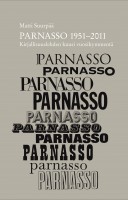 Parnasso 1951–2011. Kirjallisuuslehden kuusi vuosikymmentä.
Parnasso 1951–2011. Kirjallisuuslehden kuusi vuosikymmentä.
[Parnasso, 1951–2011. Six decades of a literary journal]
Helsinki: Otava, 2011. 559 p., ill.
ISBN 978-951-1-23368-8
€ 45.90, hardback
The 60-year history of Parnasso, Finland’s longest-running literary journal, is a chronicle of the assimilation of ‘the modern’ into Finnish literature. Matti Suurpää – a long-time contributor, and former head of the SKS publishing house – singles out the 1958–1965 period under the editorship of Kai Laitinen (professor of literature, Editor-in-Chief of Books from Finland from 1976 to 1990) as the era with the broadest editorial scope. Finnish modernist literature, developed during the 1950s, had by then staked out its territory, and the journal consolidated its power to promote it. Laitinen published an excellent themed issue on Finland-Swedish literature to rehabilitate and reintegrate writing by Swedish-speaking authors into the field of Finnish literature. Subsequent editors considered it important to include translations of foreign literature in Parnasso. As the archives of the journal have been lost, Suurpää carried out a close reading of the annual volumes. The result is an eminently clear and readable work in which a wealth of extracts of writing and discussions illuminate the story of the modernisation of Finnish literature.
Translated by Ruth Urbom
Snowbirds
2 November 2011 | Extracts, Non-fiction
The short winter days of the northerly latitudes are made brighter by snow cover, which almost doubles the amount of available light. Reflection from the snow is an aid for photographers working outdoors in winter conditions. A new book, entitled Linnut lumen valossa (‘Birds in the light of snow’), presents the best shots by four professionals, Arto Juvonen, Tomi Muukkonen, Jari Peltomäki and Markus Varesvuo, who specialise in patiently stalking the feathered survivors in the cold
The photographs and texts are from the book Linnut lumen valossa (‘Birds in the light of snow’, edited by Arno Rautavaara. Design and layout by Jukka Aalto/Armadillo Graphics. Tammi, 2011)

Snowy owl. Photo: Markus Varesvuo, 2010
Green thoughts
Extracts from the novel Kuperat ja koverat (‘Convex and concave’, Otava, 2010)
I decided to go to the Museum of Fine Arts.
After paying for my entrance ticket, I climbed the wide staircase to the first floor. There all I saw were dull paintings, the same heroic seed-sowers and floor-sanders as everywhere else. Why were so many art museums nothing more than collections of frames? Always national heroes making their horses dance, mud-coloured grumblers and overblown historical scenes. There was not a single museum in which a grandfather would not be sitting on a wobbly stool peering over his broken spectacles, interrogating a young man about to set off on his travels, cheeks burning with enthusiasm, behind them the entire village, complete with ear trumpets and balls of wool. The painting’s eternal title would be ‘Interrogation’ and it would be covered with shiny varnish, so that in the end all you would be able to see would be your own face.
I climbed up to the next floor. All I really felt was a pressing need to run away. No Flemish conversation piece acquired in the Habsburg era was able to erase a growing anxiety related to love. More…
Rock or baroque?
30 April 2014 | Extracts, Non-fiction
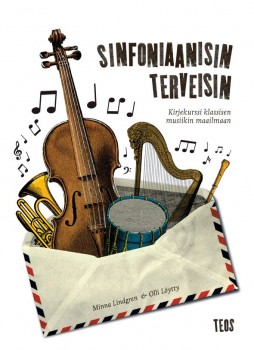 What if your old favourites lose their flavour? Could there be a way of broadening one’s views? Scholar Olli Löytty began thinking that there might be more to music than 1980s rock, so he turned to the music writer Minna Lindgren who was delighted by the chance of introducing him the enormous garden of classical music. In their correspondence they discussed – and argued about – the creativity of orchestra musicians, the significance of rhythm and whether the emotional approach to music might not be the only one. Their letters, from 2009 to 2013, an entertaining musical conversation, became a book. Extracts from Sinfoniaanisin terveisin. Kirjekurssi klassisen musiikin maailmaan (‘With symphonical greetings. A correspondence course in classical music’)
What if your old favourites lose their flavour? Could there be a way of broadening one’s views? Scholar Olli Löytty began thinking that there might be more to music than 1980s rock, so he turned to the music writer Minna Lindgren who was delighted by the chance of introducing him the enormous garden of classical music. In their correspondence they discussed – and argued about – the creativity of orchestra musicians, the significance of rhythm and whether the emotional approach to music might not be the only one. Their letters, from 2009 to 2013, an entertaining musical conversation, became a book. Extracts from Sinfoniaanisin terveisin. Kirjekurssi klassisen musiikin maailmaan (‘With symphonical greetings. A correspondence course in classical music’)
Olli, 19 March, 2009
Dear expert,
I never imagined that the day would come when I would say that rock had begun to sound rather boring. There are seldom, any more, the moments when some piece sweeps you away and makes you want to listen to more of the same. I derive my greatest enjoyment from the favourites of my youth, and that is, I think, rather alarming, as I consider people to be naturally curious beings whom new experiences, extending their range of experiences and sensations, brings nothing but good.
Singing along, with practised wistfulness, to Eppu Normaali’s ‘Murheellisten laulujen maa’ (‘The land of sad songs’) alone in the car doesn’t provide much in the way of inspiration. It really is time to find something new to listen to! My situation is already so desperate that I am prepared to seek musical stimulation from as distant a world as classical music. I know more about the African roots of rock than about the birth of western music, the music that is known as classical. But it looks and sounds like such an unapproachable culture that I badly need help on my voyage of exploration. Where should I start, when I don’t really know anything? More…
Valokuva taiteeksi. Photography into Art. Hannula & Hinkka -kokoelma / Collection
30 May 2013 | Mini reviews, Reviews
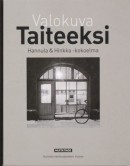 Valokuva taiteeksi. Photography into Art. Hannula & Hinkka -kokoelma / Collection
Valokuva taiteeksi. Photography into Art. Hannula & Hinkka -kokoelma / Collection
Toimituskunta [Edited by] Erja Hannula, Jorma Hinkka, Sofia Lahti, Tuomo-Juhani Vuorenmaa
English translation: Jüri Kokkonen
Helsinki: Aalto University School of Arts, Design and Architecture, Aalto ARTS Books (Musta Taide 4/2012; publication series of The Finnish Museum of Photography 44.) 209 p., ill.
ISBN 958-952-292-000-3
€33.90, hardback
It has been typical of Finland that it lacks collections of international photography, private or public. In the politically turbulent 1970s interest in photography began to grow. The Hippolyte Gallery, run by artist Ismo Kajander, exhibited international photography by Diane Arbus, Eugène Atget and Édouard Boubat, among others. The graphic designer Jorma Hinkka (also Art Director of Books from Finland, 1998–2006) began making posters for Hippolyte ‘out of pure enthusiasm’, and designing books by Finnish photographers, among them Pentti Sammallahti, Ismo Hölttö, Jorma Puranen and Merja Salo. As a result of spending so much time with ‘the black art’ (as it was called by a Finnish pioneer of photography, I.K. Inha, in 1908), Hinkka and his art director spouse Erja Hannula began to collect samples of it. After 30 years, in 2012, they donated more than two hundred photographs by almost a hundred artists to The Finnish Museum of Photography. The social status of the black art has risen considerably since the 1970s, as has professionalism in the field. This book presents excellent reproductions of the collection of photos, taken within a century and a half; the variety of styles and subjects chosen surprise with its richness.

